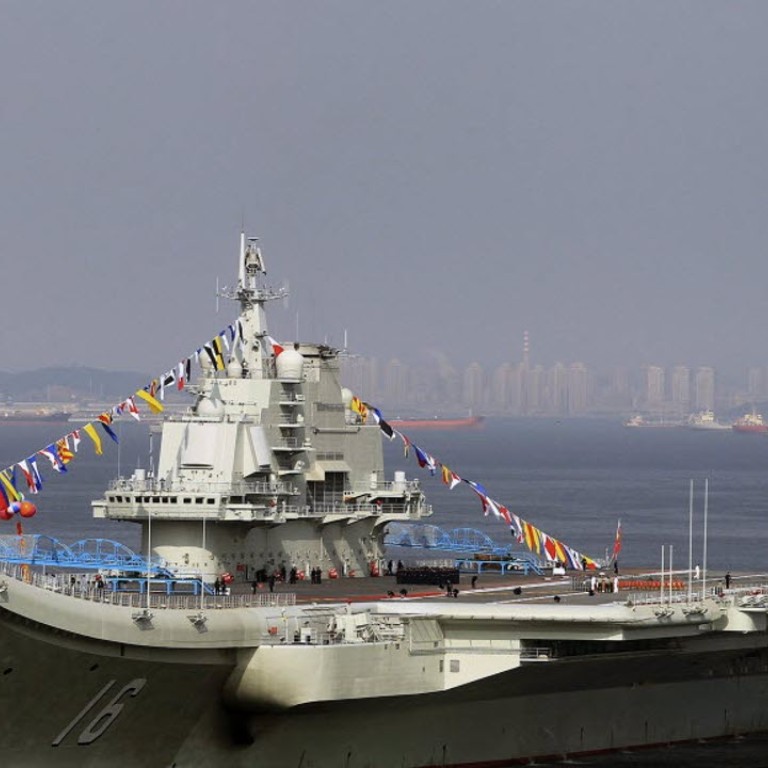
China’s second aircraft carrier to copy a dated Soviet-era design as naval hardware demands increase
China’s first home-made aircraft carrier will be a copy of a Soviet-era vessel with some refinements, with the navy rushing to ramp up its combat capacity as maritime tensions rise in the region, according to analysts.
The defence ministry confirmed on Wednesday that the country’s second aircraft carrier was under construction in the port of Dalian.
It would be conventionally powered, with a standard displacement of 50,000 tonnes, and have a ski-jump flight deck, features that are very similar to those of the Liaoning, a Soviet-made vessel sold to China in 1998.
The new warship will be slightly lighter than the Liaoning but have more space for fighter jets, according to Ifeng.com, an online news arm of Hong Kong-based Phoenix TV.
J-15 fighter jet pilots and crew were training on the Liaoning and be able to transition seamlessly to the new carrier, the report said.
READ MORE: China building second aircraft carrier as concern mounts over claims to South China Sea
Retired major general Xu Guangyu said military assessments indicated that China was ready and able to develop a catapult launch system but top brass had opted for a more dated ski-jump take-off because it would allow for a smoother transition for the J-15.
PLA Daily quoted Zhang Junshe, a researcher at the PLA’s Naval Military Academic Research Institute, as saying that the country would need at least three aircraft carriers to meet its demands for naval patrols, training and maintenance.
China has been locked with its neighbours over sovereignty disputes in South China Sea, and has taken steps, such as building artificial islands, to assert its claims while trying to deter US involvement in the region.
It has also invested heavily to expand its naval and air force over the past year.
In June, Kanwa Defence Review, a magazine based in Canada, reported that China would have at least 12 advanced Type 052D guided missile destroyers and 22 multi-role 054A frigates by next year, followed by other state-of-the-art vessels, including two more home-built aircraft carriers.
INTERACTIVE: Slow boat to China — the long, troubled journey of the Varyag from the Black Sea to Dalian
A retired PLA senior colonel who used to be involved in naval research said many of China’s advanced vessels like the 052D destroyers were being sent to the South China Sea.
In October, sources close to the navy confirmed a statement by the Pentagon’s Defence Intelligence Agency that the People’s Liberation Army Navy planned to conduct the first patrol of its Type 094 Jin-class nuclear-powered submarine by the end of the year. The submarine is armed with JL-2 ballistic missiles that can hit the United States.
Earlier last month, China signed a US$2 billion agreement with Russia to buy 24 Su-35 fighter jets over three years, starting from 2016.
Photos published by state-run Xinhua News Agency also suggested that China might have started mass production of its first stealth fighter, the J-20.
Last week, the military said the Liaoning had made a “key breakthrough” in shifting from the testing phase to being able to operate ship-borne aircraft.
Additional reporting by Li Jing

